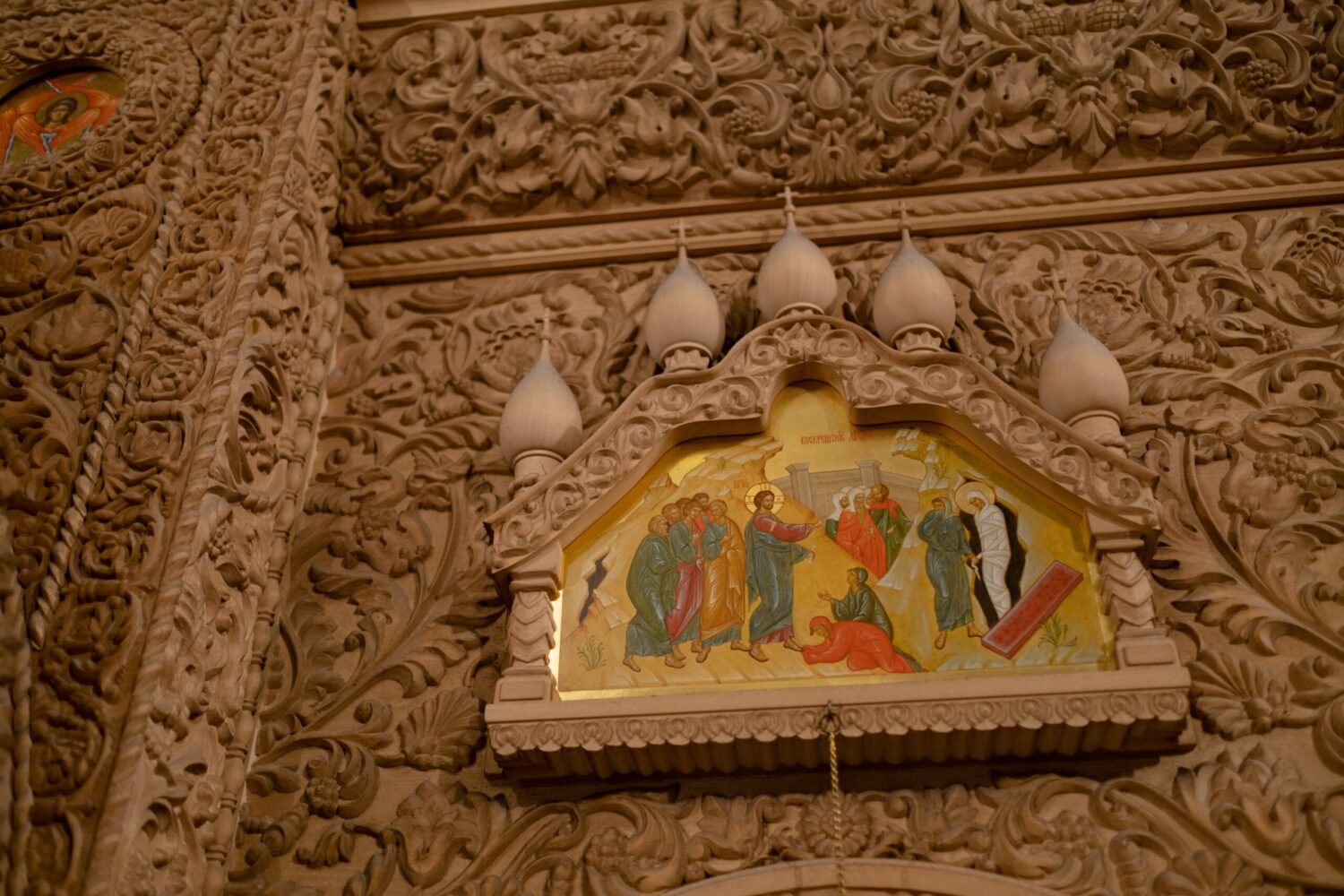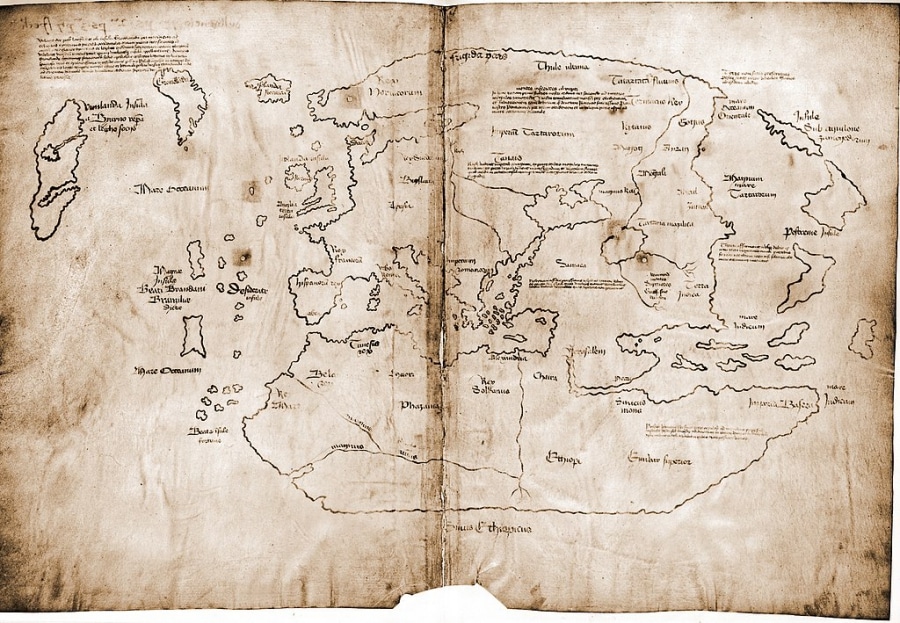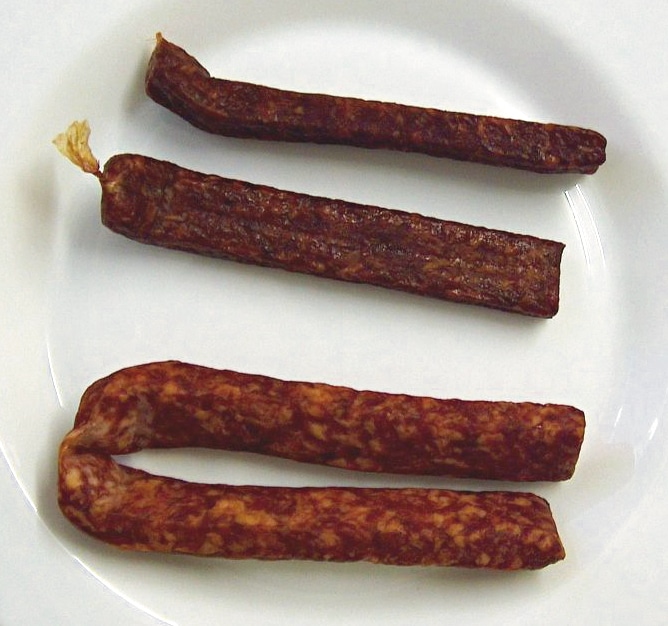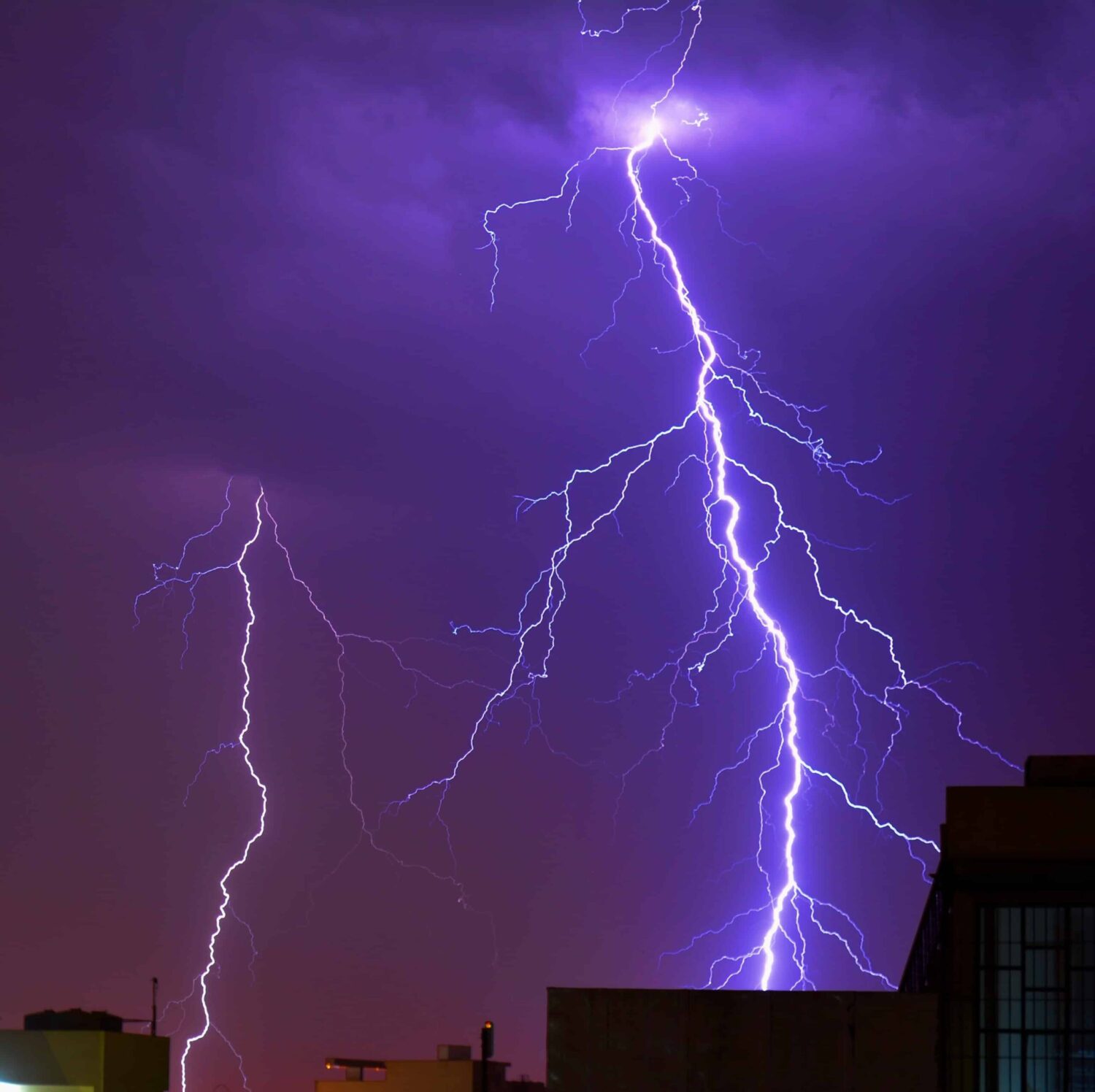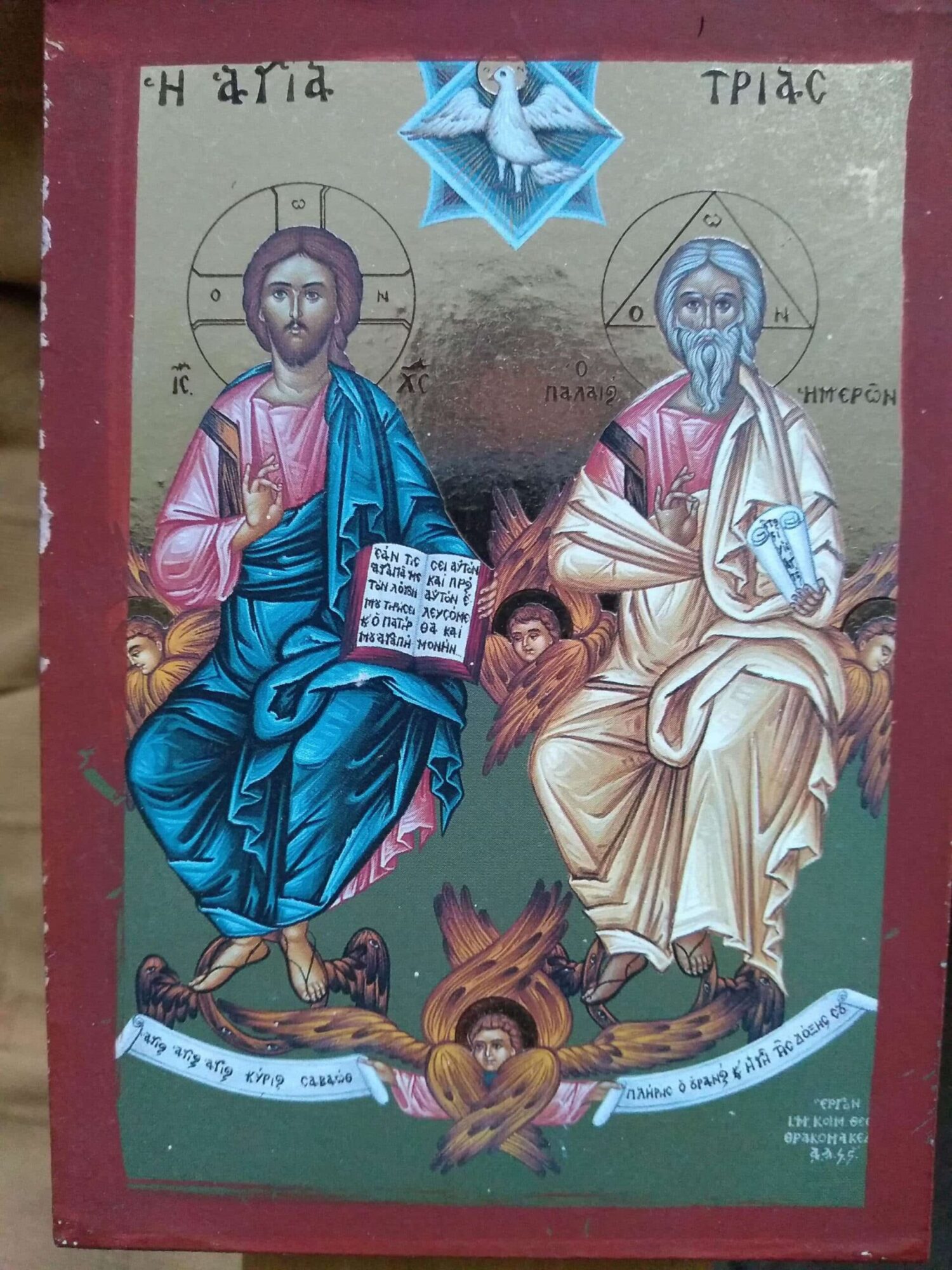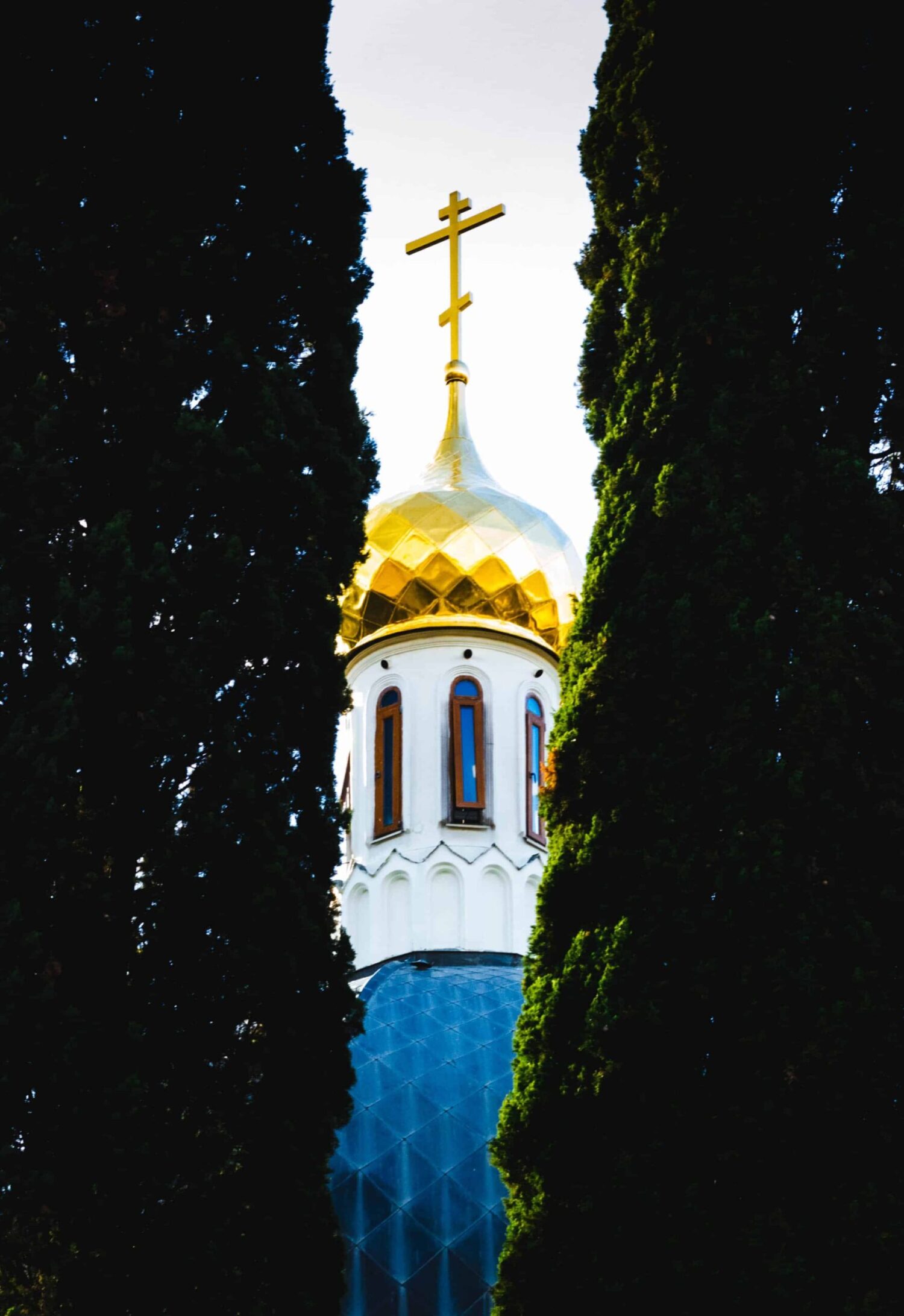Author: Archimandrite Justin (Popovich)
Matter is represented in the human body, no doubt, in the most enigmatic, mysterious and complex way. Brain?! What marvelous mysteries are performed between his matter and soul! No matter how much experience the human race has, these mysteries can neither be understood nor comprehended. Only a few of them are accessible to human sensory-rational knowledge. In the same way, the human heart is all woven from heavenly and earthly secrets. Every cell in the human body, and every molecule, and every atom are woven in the same way. Everything and everything is on its mysterious path to God, to the God-man. After all, matter was created by the God Logos, and thus it is God-centered. By his coming into our earthly world and by his chain-like divine-human economy of saving the world, the Lord Christ clearly showed that not only the soul, but also matter was created by God and for God; showed that there is a God-man. After all, the matter created by the God Logos with all its inner nerve is God-striking and Christ-centered.
The obvious proof of this is that God the Word became flesh, became man (John 1:14). Thus, matter was awarded divine majesty and entered into the gracious and virtuous feat of deification and Christification. God became flesh, became human, so that, having become a man, the whole body would receive God into itself, be filled with His miraculous powers and might, supracherubic glory and eternity. And all this happens, and all this comes true through the divine-human body of the Church, which is the God-man Christ in the fullness of his divine-human personality, the fullness of “He who fills all in all” (Eph. 1:23). By this divine-human life in the church, the body as matter, as substance, is sanctified by the Holy Spirit and thereby is trinified by the Most Holy Trinity. Thus, matter comprehends its highest divine meaning and purpose, its eternal bliss and its divine-human immortal joy.
The holiness of the saints, the holiness of their souls and their bodies, has its source in their zealous grace-virtuous life in the divine-human body of the Church of Christ. Thus, holiness embraces the entire personality of a person: the whole soul and body, everything that enters into the mysterious structure of a human being. The holiness of the saints is not contained only in their soul, but inevitably extends to their body, the saints have both soul and body, and we, piously honoring the saints, honor their whole personality, without dividing them into a holy soul and a holy body. Hence the pious veneration of the relics of the saints – a natural component of the pious veneration and prayerful invocation of the saints. All this makes up a single indivisible feat, just as the soul and body make up a single indivisible personality of a saint. During his life on earth, the saint achieves the holiness of his personality by the unceasing and concordant gracious-virtuous cooperation of his soul and body, fills his soul and body with the grace of the Holy Spirit, and thus transforms them into vessels of holy mysteries and holy virtues. Therefore, it is quite natural to give pious veneration to both vessels of God’s grace. After all, the grace-filled power of Christ permeates and blesses all the constituent parts of the human personality and the whole personality as a whole. By their unceasing evangelical deeds, the saints are gradually filled with the Holy Spirit, so that their holy bodies also become temples of the Holy Spirit (I Cor. 6:19; 3:17). By faith instilling Christ in their hearts (Eph. 3:17), by active love and fulfillment of the commandments (cf. II Cor. 13:13; Gal. 5:6; John 14:28) — God the Father, by feats of grace (cf. Eph 3:16; 3:3; I Cor. 2:12) being established in the Holy Spirit, the saints trinify themselves, become the abode of the Most Holy Trinity (cf. John 14:23; 17:21-23), the temple of the living God ( II Cor. 6:16), and their whole life flows from the Father through the Son in the Holy Spirit. And graciously venerating the holy relics of the saints, the Church venerates the temples of the Holy Spirit, the temples of the living God, in which God lives by his grace even after the bodily death of the saint, and, according to his wise good will, works miracles – from them and through them. And those miracles that happen from holy relics testify that their pious veneration by people is pleasing to God.
The pious veneration of holy relics, based on their miraculous work, originates in Divine Revelation. “Even in the Old Testament, God deigned to glorify the relics of some of his saints with miracles. So, from touching the holy relics of the prophet Elisha, the deceased was resurrected (IV Kings 13, 21; Sir. 48, 14-15). 18; compare III Kings 13:32). Patriarch Joseph left a testament to the sons of Israel that they keep his remains in Egypt and take them to the promised land at the Exodus (Gen. 50, 25).
The New Testament raised the body to an unprecedented divine height and glorified it with a glory that does not exist with cherubim and seraphim. The gospel of the New Testament: the meaning and purpose of the human body is that it, together with the soul, achieve and inherit eternal life in eternal bliss, the Lord Christ came to save-christify-deify-deify the whole person, that is, both soul and body, so that by the resurrection provide them with victory over death and eternal life. And no one has ever glorified the human body as the Lord Christ did with his resurrection in the body, his ascension in the body to heaven and eternal sitting in the body at the right hand of God the Father.
Thus, the resurrected Lord introduced the pledge of resurrection into the nature of the human body and — “created the way of all flesh to the resurrection from the dead” (liturgy of St. Basil the Great, Prayer during “Holy, holy, holy …”). From that time on, man knows that the body was created for eternity through God-manhood, and that his divine calling on earth is to fight together with the soul for eternal life (cf. I Tim. 6:12; II Cor. 4:18), to fight with the help of all gracious and virtuous means and thereby grace oneself, be filled with the grace of God, transform oneself into the temple of the Holy Spirit, into the temple of the living God (cf. 1 Cor. 3:16-17; 6:19; II Cor. 6:16).
Bearing in mind that this New Testament goal of the human body has been achieved and realized in the personality of a saint, Christians also render pious veneration to the bodies of saints, their holy relics, as holy temples of the Holy Spirit who dwells in them with his grace. But the Holy Revelation shows that, due to its immeasurable love for mankind, the Holy Spirit abides by His grace not only in the bodies of the saints, but also in their clothes. Thus, the handkerchiefs and aprons of the holy Apostle Paul heal the sick and cast out unclean spirits (Acts 19:12); the prophet Elijah strikes the water with his mantle, dividing the waters of the Jordan, and the Jordan crosses the dry bed with his disciple Elisha (2 Kings 2:8); the prophet Elisha himself does the same with the same mantle after the ascension of Elijah to heaven (2 Kings 2, 1 4). And all this has its divine confirmation and explanation in the divine power that dwelt in the clothes of the Savior, which wrapped around His most pure divine body (cf. Mt. 9, 20-23). And even more – out of His unspeakable philanthropy, the Divine Lord makes it so that the servants of His Divinity work miracles not only with their bodies and clothes, but also with the shadow of their body, as evidenced by the case of the Apostle Peter: his shadow heals the sick and casts out unclean spirits (Acts 5, 15-16).
The immortal gospel of the Holy Revelation about the holy relics and their pious veneration has been witnessed and is unceasingly witnessed by Holy Tradition from the Apostolic age to our days. Countless are the holy relics of the holy saints of God throughout the Orthodox world. Their miracles are innumerable. Their pious veneration on the part of Orthodox Christians is ubiquitous. And this is undoubtedly because the most holy relics by their miracle-working induce us to pious veneration of them. From the very beginning, back in the apostolic age, Christians piously venerated the honest relics of the holy Forerunner and the holy apostles, and so their relics were able to reach us, and during persecutions they hid, hid in their homes the sacred remains of the holy martyrs. And from that time until the present day, the holy relics of the holy saints of God, with their miracles, pour the immortal joy of our God-human faith into the hearts of Orthodox Christians. The evidence for this is countless, let us recall only a few.
How touchingly St. Chrysostom describes the festive transfer and meeting of the holy relics in his Eulogy to St. Ignatius (Patr. gr. t. 50, col. 594): You, inhabitants of Antioch, dismissed the bishop, and accepted the martyr; they let him go with prayers, but received him with a crown, and not only you, but also the inhabitants of the cities that lay on his way. Think how they must all have felt at the return of his holy remains! what sweetness they enjoyed! what admiration they were! how happy they were! what praises were showered from everywhere on the crowned bearer! Like a brave warrior who defeated the enemy and returns triumphantly from the battle, the inhabitants admiringly greet him, not even letting him set foot on the ground, but they lift him up and carry him home in their arms, showering him with countless praises – in the same way, the inhabitants of all cities , starting from Rome, they carried one after another on their shoulders and handed it over to our city, glorifying the crowned bearer, praising the winner … During this time, the holy martyr bestowed grace on all those cities, confirmed them in piety; and ever since then he has enriched your city.
Narrating the miraculous power of the holy relics, Saint Ephraim of Syria speaks to the holy martyrs: even after death they act as if they were alive, heal the sick, cast out demons, and by the power of the Lord repel their every evil attack. After all, the miraculous grace of the Holy Spirit is always present in holy relics (A eulogy to the martyrs all over the world who have suffered. – Creations, part II, p. 497, M., 1881).
At the opening of the holy relics of Sts. Gervasius and Protasius, Saint Ambrose addresses the audience and says with reverent admiration: You have heard and even seen many who have been freed from demons, and even more of those who have just touched the clothes of the saints with their hands and were immediately healed of their illnesses. Miracles of ancient times have been revived since the coming of the Lord Jesus poured out abundant grace on the earth: you see with your own eyes how many people were healed only by the shadow of the saints. How many handkerchiefs do believers pass from hand to hand! how many different clothes that were laid on the sacred remains and only from touching them were filled with healing power, they ask each other. Everyone tries to touch them at least a little, and whoever touches them is healed. (Episi. 22; Patr. lat. 16, col. 1022).
Justifying the pious veneration of holy relics by Christians, Saint Ambrose proclaims: In the body of a martyr, I venerate the wounds taken for the name of Christ, I venerate the one who lives by the immortality of virtue; I venerate the dust sanctified by the confession of the Lord; I honor in the dust the seed of eternity; I honor the body that teaches me to love the Lord and not be afraid of death for him … Yes, I honor the body that Christ honored with martyrdom and which will reign with Christ in heaven (Serm. 55,1.11; Patr. lat. 17, col- 718 and 719).
Narrating about miracles from holy relics, Blessed Augustine says: What else do these miracles testify to, if not about the faith that preaches that Christ was resurrected in the flesh and with the flesh ascended to heaven? For the martyrs themselves were martyrs, i.e. witnesses of this faith… They laid down their lives for this faith, being able to ask it from the Lord, for whose name they tasted death. For the sake of this faith, they first discovered extraordinary patience, so that later such strength would be manifested in these miracles (On the City of God, book 22, ch. IX, Kyiv, 1910).
Saint Damascene, summing up the life-giving teaching of Holy Scripture and Holy Tradition about the pious veneration of holy relics, cherubically proclaims from the altar of his God-bearing Christ-like soul: The saints became by grace (hariti) what the Lord Christ is by nature (fusei). That is, they became gods by grace: pure and living abodes of God. For God said: I will dwell in them and walk in them; and I will be their God (II Cor. 6:16; Lev. 26:12). At the same time, Holy Scripture says: The souls of the righteous are in the hand of God, and torment will not touch them (Wisdom 3:1). After all, the death of a saint is more like a dream than death. And: The death of His saints is dear in the sight of the Lord (Pel. 115:6). Their same, what could be more precious than being in the hand of God!? For God is Life and Light, and those who are in the hand of God are in Life and Light, and God through the mind (dia tou vou) dwells also in the bodies of the saints, as the apostle testifies: Do you not know that you are the temple of God, and Does the Spirit of God live in you? (I Cor. 3:16), the Lord is Spirit (II Cor. 3:17). And one more gospel truth: If anyone destroys the temple of God, God will punish him “for the temple of God is holy; and this temple is you (I Cor. 3, 17). Therefore, how not to honor the spiritualization of God, spiritualized bodily dwellings of God? “Being alive, they boldly stand before God. The Lord Christ gave us the relics of the saints as saving springs that exude various good deeds and pour out fragrant myrrh. Let no one doubt this! After all, by the will of God, water flowed in the desert from a solid rock for a thirsty people (Ex. 17, 6), and from the jaw of a donkey – for the thirsty Samson (Jud. 15, 14-19) Is it really more incredible that the relics of the holy martyrs abundantly exude fragrant myrrh? honoring and respecting the saints.According to the Old Testament law, whoever touches a dead body is considered unclean for seven days (Num. 19, 11).
But the saints are not dead. Since He Who Himself is Life and the Author of Life was numbered among the dead, we no longer call dead those who fell asleep, reposed in the hope of the resurrection and with faith in Him — we do not call them dead. And how a dead body could work miracles. And then – how do demons are cast out by the action of holy relics, illnesses pass away, the sick are healed, the blind receive their sight, lepers are cleansed, temptations and troubles end, and every good gift from the Father of lights (James 1:17) descends on those who pray with strong faith (de fide, IV 15).
The ecumenical faith of the church about the pious veneration of holy relics was confirmed by the God-bearing fathers of the Seventh Ecumenical Council by their resolution: Our Lord Jesus Christ has given us the relics of the saints as a saving source, pouring out various blessings on the weak. Therefore, those who dared to reject the relics of the martyr: if the bishops – let them be deposed, if the monks and laity – are deprived of communion (AcL Vll, BiniiConcil. l.V, p.794, 1636 – Translated from Serbian). Rule 7 of the same Ecumenical Council says: If the honorable churches are consecrated without the holy relics of the martyrs, we determine: let the position of the relics be completed in them with the usual prayer. (Book of Rules of the Holy Apostle, Holy Councils of the Universe and Local and Holy Fathers. Canada, 1971, p. 177),
The fact that the pious veneration of holy relics is an integral part of the Divine-human economy of salvation is also evidenced by the following fact: according to all the most ancient testimonies of Holy Tradition, churches were built on the tombs and relics of saints, and the holy liturgy is performed only on the antimension, in which there are particles of holy relics. At the same time, the liturgical books, especially the Menaion, are full of prayers and hymns that speak of the pious veneration of holy relics. And the lives of the saints are replete with testimonies of their miracles, pouring into the hearts of Orthodox Christians the immortal joy of our Orthodox-God-human faith.
Everything is in everything: the mystery of holy relics is in the heart of the New Testament all-mystery: the Incarnation of God (cf. I Tim. 3:16). After all, the whole mystery of the human body is explained by the incarnation and incarnation of God: the God-man of the Lord Jesus Christ. Hence the gospel, the all-gospel about the body: The body … for the Lord and the Lord for the body (1 Cor. 6:13). And through the human body and all creation, all matter acquired its divine meaning, the divine-human universal meaning (cf. Rom. 8:19-23). After all, a person sanctified in the church with holy mysteries and holy virtues, both creature and matter are sanctified, Christified. And hence such joy: the myrrh-streaming relics of many saints. This precious miracle was given to the holy relics to show that Christians really are “Christ’s fragrance to God” (II Cor. 2:15), they are censing incense to God, heaven. The gospel truth is this: human sin is a stench before God; and every sin is a foul incense to the devil. Through the cooperation of the holy mysteries and holy virtues, Christians become “Christ’s fragrance to God.” Hence the holy myrrh-streaming relics of the saints.
Patristic heritage: a library of works of the holy fathers and teachers of the Church © <Library of the forum “Orthodox Conversation” at https://www.pagez.ru/
Photo by Ron Lach :



